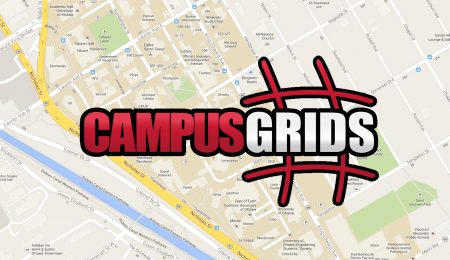A University of Ottawa student is riding an esteemed scholarship to Apple’s Worldwide Developers Conference (WWDC) in California next week, the tech giant’s annual showcase of its new products and software and a chance for attendees to collaborate with the Apple team in workshops and demonstrations.
Going to the WWDC has always been a dream for Santos Gagbegnon, a second-year computer science student at the U of O, but obvious barriers exist. Tickets for the June 3-7 conference go for US$1,600 and can only be obtained through an online lottery.
But last year Gagbegnon set his eyes on an alternative route to the WWDC, one that seemed right up his alley: Apple also runs a scholarship to bring students in STEM to the conference, largely expense-free (save travel costs). The way to secure a golden ticket? Creating an iPad app in just 10 days, along with handing in a more than stellar detailed application.
“I had a tunnel vision focus on (the project) for 10 days,” Gagbegnon says, who submitted the project in March. He ended up developing a sleek memory game using tickets for the conference.
The hard work paid off: the now infamous acceptance email from Apple arrived in his inbox about a month later.
OMFG #WWDCScholars pic.twitter.com/3Ux9fRjCPy
— Santos (@SantosDotSwift) April 15, 2019
“When I opened it and saw that I was going, I really couldn’t believe it, I was confused,” he says between laughs. “I had to go outside for a walk and just think about what happened because to know I achieved that is insane. It’s probably the biggest achievement I’ve had so far.”
But if you take a peek at Gagbegnon’s previous development work, earning a spot at the WWDC just seems like a natural progression for the 19-year-old.
Gagbegnon’s goal as a developer, he says, is to live to work, not the other way around. It shows in his apps, where he tries to blend his personal passions in life with technology for all.
One of his most prized creations as a hip-hop lover (Drake’s his favourite) is ARMusic, an augmented reality app where users can connect their Spotify playlists, open the app, and see their music floating around them through the lens of their phone’s camera.

He’s also built an app that allows people to annotate images on the web for object detection. And participated in UOttaHack, where he built a virtual scavenger hunt game.
But the best part of Gagbegnon’s story is the fact that going into app development and even computer science was never really a part of his original gameplan. Instead, it kind of happened accidentally.
A Grade 9 course he signed up for he thought would be business focused, teaching the ins and outs of Excel spreadsheets and Microsoft Word, turned out to be a beginner programming class instead.
“I had no idea what programming was but I decided to stay in it, because why not?” he remembers. “I ended up really enjoying it because this was a whole different field for me, you have to be creative with your problem-solving skills.”
Gagbegnon also got hooked on mobile development in that same class, thanks to a final project where students were tasked with designing a computer app. He remembers a student beside him making a version of Flappy Bird (that addictive tapping game from 2014) and became obsessed with the idea of developing his own hit app.
“I found it really sick that I could just write a program and put directly on my phone and show my friends and family what I’m doing,” he says. “That’s what really got me into it, how easy it was to bring an idea to life with iOS development.”
Aside from attending the keynote conference where Apple announces new technology and software (The Verge reported we can expect iOS13 for iPhones and iPads and a breakup of iTunes, among other things), Gagbegnon is eager to meet other young developers and Apple pros alike.
“I can’t wait to just network and make a whole bunch of new friends and connections,” he says.
What’s next for Gagbegnon? Many of his budding app ideas are still under wraps but he would let one concept out of the bag. His goal is to design a Cinemagraph app (a mix of a still photo and video, with certain parts of the image in motion, say a bus or car) for Instagram stories.
The long-term plan is to, after graduation, start his own company centred around a core mobile app, similar to Snapchat or Uber.
“I really want to build from the ground up after I finish my degree,” he says.
Based on what he’s achieved so far, you can trust him on that.





